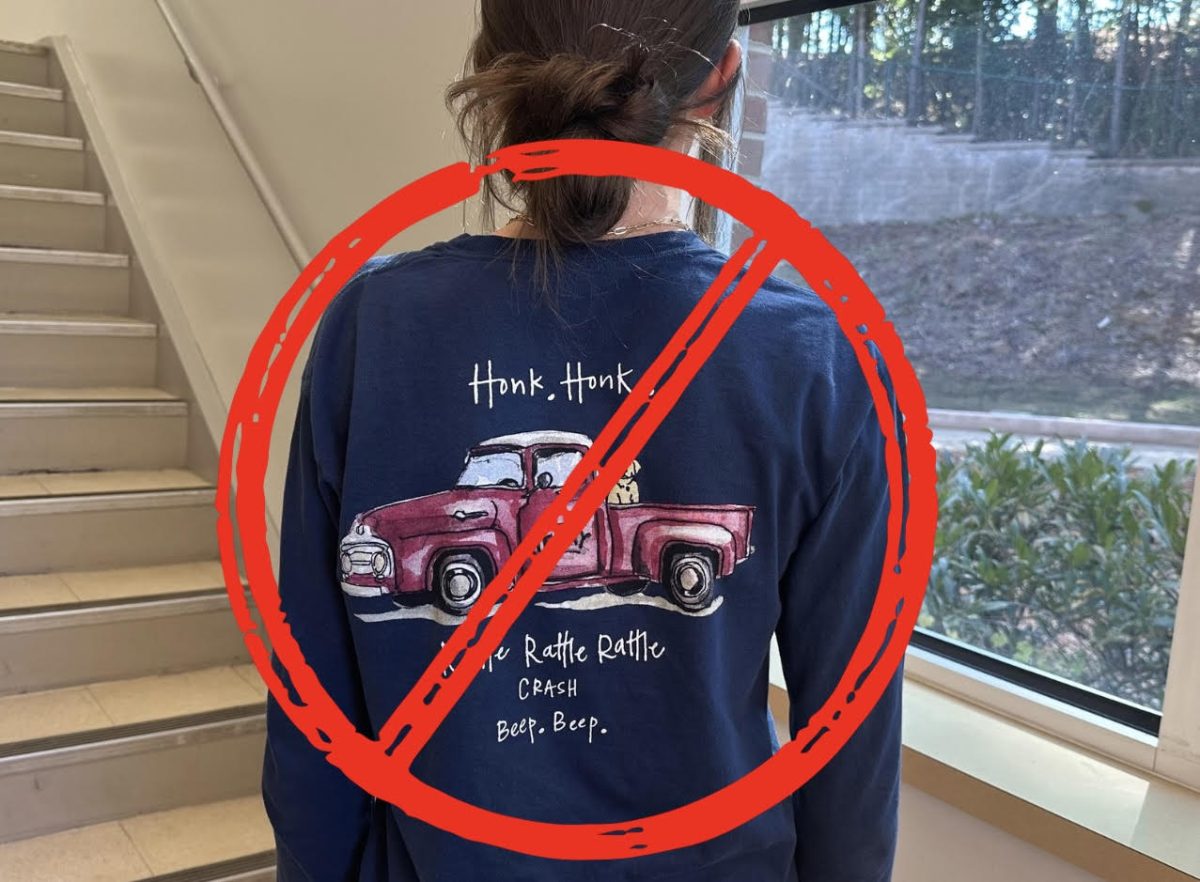This year, the Westminster Middle School introduced a new dress code policy requiring students to wear only school-branded, college, or minimally branded t-shirts, sparking a debate among students and faculty about personal expression and how t-shirts affect a student’s education. The school prohibited t-shirts advertising brands, ideas, or opinions this year because students were becoming walking advertisements without realizing it. While students argue that the new t-shirt rule is unfair, restricting their ability to wear graphic designs, teachers support the policy, believing it prevents students from becoming ‘human billboards’ for brands.
8th grader Caroline Ganz has already found the rule to be too restrictive. “I don’t like it because I got dress-coded when I was wearing my Seaside shirt, and I think it’s too strict; you can’t even wear city shirts,” she says. Ganz is not alone. Other Middle School students are upset with this rule and don’t agree with its terms. They find it unfair that they can’t wear anything with an advertisement larger than two inches or anything with graphics.
Middle School Director of Operations Anne-Sophie Hankla says she understands the new policy as a parent because she thought the graphics and advertisements could turn children into human billboards without them even noticing. Hankla says she supports the rule as an administrator and a parent for various reasons. “The big graphics with an advertisement for a brand or things like that turn our students into billboards advertising brands, and as a parent, I’m not a huge fan of that,” she says. She supports the new rule as an administrator because sometimes specific clothing can create “gaps between groups.” Shirts advertising attendance at concerts or specific places can unintentionally convey exclusivity, suggesting the wearer has experienced something others have not. Hankla also mentioned that this policy was implemented to help graduating Middle School students adjust to the Upper School dress code. Finally, she warns that the rule has not been enforced enough and that change can be expected with the rule being enforced more heavily.
Head of the Middle School Leslie-Ann Little says that when t-shirts are worn people don’t realize they have turned into an advertisement. “Sometimes we don’t know that we have been turned into human billboards,” she says. Little wants to ensure students aren’t becoming divisive through their t-shirts, particularly in an election year. “Part of respecting anyone’s opinions is making sure we leave room for them,” she says. When making this rule, the administrators wanted to encourage students to discuss opinions rather than advertising them through t-shirts.
So far the t-shirt rule hasn’t had any heavy-handed enforcement because many see the rule as too broad; some students wear shirts that don’t meet the dress code but are otherwise acceptable, and Westminster administrators have hesitated to enforce the rule. Little notes that the rule’s ambiguity is clear from the continued popularity of certain shirts among students that technically don’t meet the standard. Moreover, administrators admit the new dress code rule isn’t heavily enforced because it was updated at the last minute.
In a September press conference with Paw Prints staff, Little hinted at a potential update to the rule. “I don’t think we got the wording right,” she said.


